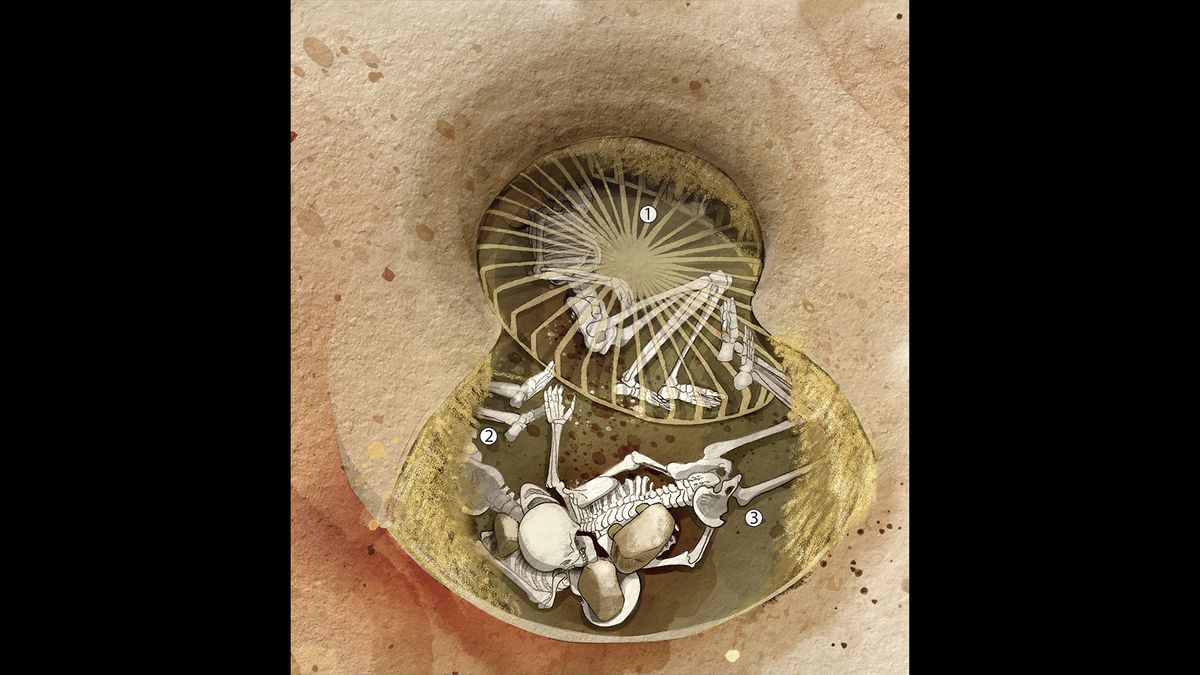Women in Neolithic Europe were tied up and buried alive in ritual sacrifices, suggests a new study, which has identified more than a dozen such murders over the course of more than 2,000 years.
According to the study's authors, the killing of sacrificial victims by "incapacitation", a method which involves tying their necks to their legs folded behind their backs so that they strangle themselves, seems to have been a tradition in much of Neolithic Europe.
The study, published this Wednesday in Science Advances, comes after a re-evaluation of an ancient tomb discovered more than 20 years ago in Saint-Paul-Trois-Châteaux, near Avignon, in the south of France.
The tomb imitates a silo, or pit where grain was stored, and contained the remains of three women who were buried there around 5500 years ago.
The new study reinterprets the positions of two of the skeletons and suggests that the women were deliberately killed - first tied up with a so-called "incapacitation" and then buried alive.
This practice may have been used in an agricultural ritual, the study's authors suggest. "There was a lot of agricultural symbolism in the tomb," anthropologist Eric Crubézy, a biologist at Paul Sabatier University in Toulouse and senior author of the article, explained to Live Science.

Crubézy points out that a wooden structure built over the tomb was aligned with the sun on the solstices and that several stones apparently used for grinding grain were found nearby.
"There's the alignment, there's the silo, there's the broken stones. There are strong indications that this was a rite related to agriculture," emphasizes Crubézy.
To investigate the possibility that this was a case of human sacrifice, Crubézy's team, who were involved in the initial discovery of the tomb, examined previous archaeological studies of tomb sites across Europe.
The team included forensic pathologist Bertrand Ludes, a researcher at the University of Paris Cité and lead author of the study.
The researchers found evidence of 20 probable cases of sacrificial killings using incapacitation at 14 Neolithic sites, dating from between 5400 and 3500 BC.
They also found documents describing Mesolithic rock art in the Cave of Addaura in Sicily, made between 14000 and 11000 BC, which appears to depict two human figures tied up using incapacitation.
With evidence of this practice at sites ranging from the Czech Republic to Spain, incapacitation seems to have been widely used as a method of human sacrifice in much of Neolithic Europe.
"We can say that this special form of torture was a common practice at all these sites," concludes Crubézy, speaking to Science magazine. "It reallyis a horror."





